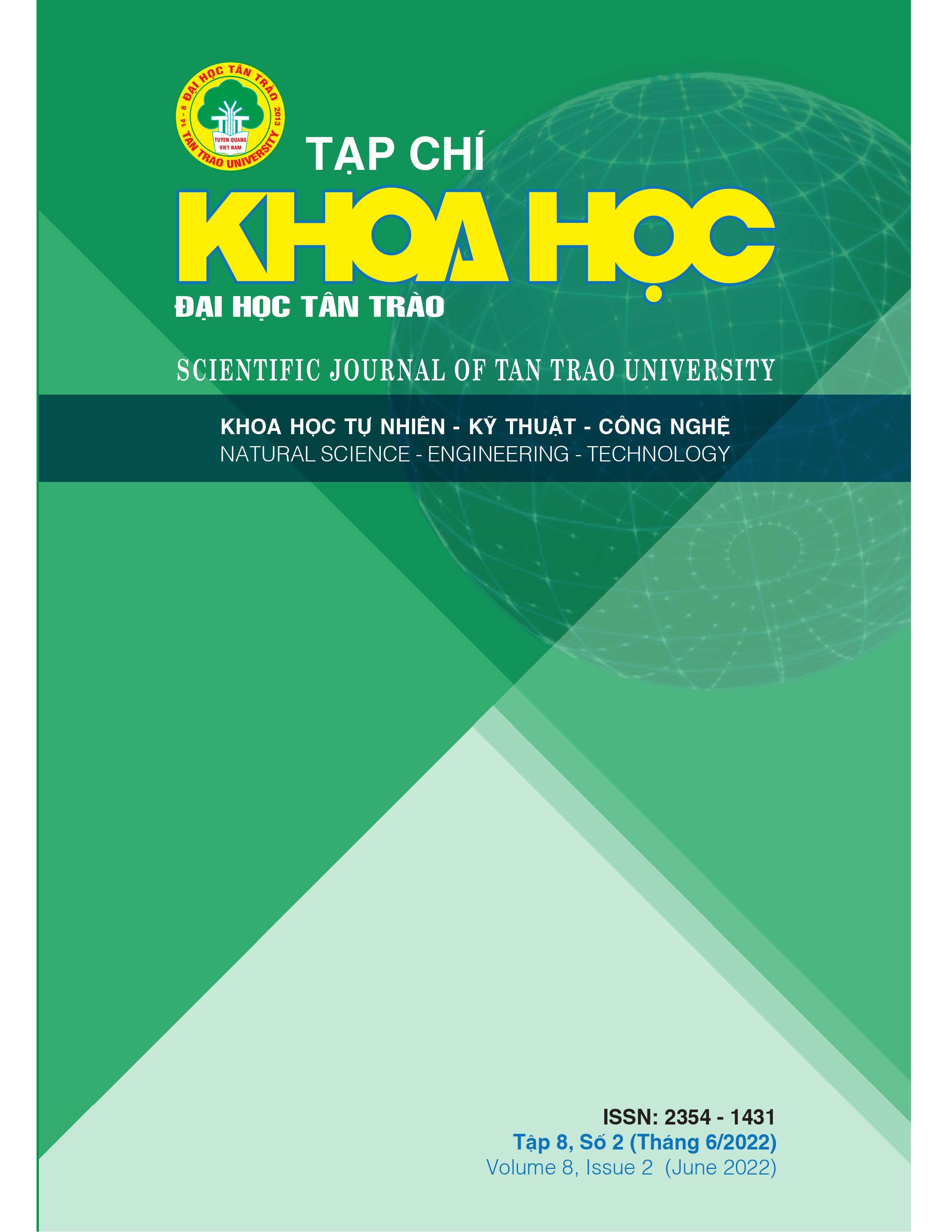MỘT MỞ RỘNG CỦA PHƯƠNG PHÁP THÁC TRIỂN THEO THAM SỐ GIẢI HỆ PHƯƠNG TRÌNH PHI TUYẾN CÓ NHIỄU
DOI:
https://doi.org/10.51453/2354-1431/2022/763Từ khóa:
PhÆ°Æ¡ng pháp thác triển theo tham số, Hệ phÆ°Æ¡ng trình phi tuyến có nhiá»…u, Giải xấp xỉTóm tắt
Trong bài báo này, chúng tôi đề xuất một mở rộng của phương pháp thác triển theo tham số giải hệ phương trình phi tuyến có nhiễu. Sự tồn tại và tính duy nhất nghiệm sẽ được nghiên cứu. Chúng tôi cũng thảo luận về sai số của phương pháp. Tính hiệu quả và khả năng áp dụng của phương pháp được trình bày thông qua một ví dụ.
Tải xuống
Tài liệu tham khảo
[1] Aslam Noor, M., Waseem, M. (2009). Some it- erative methods for solving a system of nonlin- ear equations, Comput. Math. Appl. 57: 101 - 106.
[2] Bernstein, S. N. (1906). Sur la généralisation du problème de Dirichlet, Math. Ann. 62: 253 - 271.
[3] Binh, N. T., Ninh, K. V. (2019). Parame- ter continuation method for solving nonlinear Fredholm integral equations of the second kind, Bull. Malays. Math. Sci. Soc. 42(6): 3379 - 3407.
[4] Binh, N. T. (2019). Parameter continuation method for solving systems of nonlinear equa- tions, Hanoi Pedagogical University 2 J. Sci. 63: 3–13.
[5] Binh, N. T. (2021). A new extension of param- eter continuation method for solving operator equations of the second kind, Tan Trao Univer- sity J. Sci. 21: 157 - 165.
[6] Chuong, N. M., Khai, N.V., Ninh, K.V., Tuan, N.V., Tuong, N. (2000). Numerical analysis, VietNam Education Publishing House, Hanoi.
[7] Gaponenko, Y. L. (1986). The parameter - ex- tension method for an equation of the second kind with a Lipschitz - continuous and mono- tonic operator, Comput. Maths. Math. Phys. 26(8): 1123 - 1131.
[8] Ghane-Kanafi, A., Kordrostami, S. (2016). A New Approach for Solving Nonlinear Equa- tions by Using of Integer Nonlinear Program- ming , Appl. Math. 7: 473 - 481.
[9] Leray, J., Schauder, J. (1934). Topologie et équations fonctionnelles, Ann. Ec. Norm. Sup. 51: 45 - 78.
[10] Ninh, K. V. (1999). Approximate solutions of the equation of a second kind with sum of two operators, Proc. Inst. Math. Mech. Azerb. Acad. Sci. V(X): 97 - 101.
[11] Ninh, K. V. (2011). A method of extending by parameter for approximate solutions of operator equations, Acta. Math. Vietnam. 36(1): 119 - 127.
[12] Ninh, K. V., Binh, N. T. (2019). Analytical so- lution of Volterra–Fredholm integral equations using hybrid of the Method of contractive map- ping and Parameter continuation method, Int. J. Appl. Comput. Math. 5(76): 1 - 20.
[13] Ortega, J. M., Rheinboldt, W. C. (1970). Iter- ative solution of nonlinear equations in several variables, Academic Press, New York.
[14] Trenogin, V. A. (1980). Functional Analysis, Nauka, Moscow.
[15] Trenogin, V. A.(1996). Locally invertible op- erator and parameter continuation method. Funktsional, Anal. i Prilozhen. 30(2): 93 - 95.
[16] Trenogin, V. A. (1996). Global invertibility of nonlinear operator and the method of continu- ation with respect to a parameter, Dokl. Akad. Nauk. 350(4): 1 - 3.
[17] Trenogin, V. A. (1998). Invertibility of non- linear operators and parameter continuation method (English summary). Spectral and scat- tering theory, Edited by Alexander G. Ramm, Plenum Press, New York.
[18] Vetekha, V. G.(2000). Parameter continua- tion method for ordinary differential equa- tions, Proceedings of the 2nd ISAAC Congress, Vol.1, Fukuoka, Japan, August 16 - 21.
Tải xuống
Đã Xuất bản
Cách trích dẫn
Số
Chuyên mục
Giấy phép

Tác phẩm này được cấp phép theo Giấy phép Quốc tế Creative Commons Attribution-ShareAlike 4.0 .
Bài báo được xuất bản ở Tạp chí Khoa học Đại học Tân Trào được cấp phép theo giấy phép Ghi công - Chia sẻ tương tự 4.0 Quốc tế (CC BY-SA). Theo đó, các tác giả khác có thể sao chép, chuyển đổi hay phân phối lại các bài báo này với mục đích hợp pháp trên mọi phương tiện, với điều kiện họ trích dẫn tác giả, Tạp chí Khoa học Đại học Tân Trào và đường link đến bản quyền; nêu rõ các thay đổi đã thực hiện và các nghiên cứu đăng lại được tiến hành theo cùng một bản quyền.
Bản quyền bài báo thuộc về các tác giả, không hạn chế số lượng. Tạp chí Khoa học Tân Trào được cấp giấy phép không độc quyền để xuất bản bài báo với tư cách nhà xuất bản nguồn, kèm theo quyền thương mại để in các bài báo cung cấp cho các thư viện và cá nhân.
Mặc dù các điều khoản của giấy phép CC BY-SA không dành cho các tác giả (với tư cách là người giữ bản quyền của bài báo, họ không bị hạn chế về quyền hạn), khi gửi bài tới Tạp chí Khoa học Đại học Tân Trào, tác giả cần đáp ứng quyền của độc giả, và cần cấp quyền cho bên thứ 3 sử dụng bài báo của họ trong phạm vi của giấy phép.






